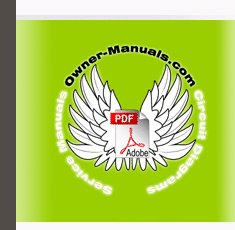|
|
|
Categories
|
|
Information
|
|
Featured Product
|
|
|
 |
|
|
There are currently no product reviews.
 ;
Perfect. Very good service and very good scanning quality. All sheets are very legible. Thank's
 ;
My first manual from Owner-Manuals.com but not the last! I am very satisfied with the easy ordering and promt delivery of a manual I did not find anywhere else.
 ;
This manual is very helpfull to use the Power Supply. All technical information has been available.
For service use the circuit diagrams are very good.
Thanks .
 ;
Very comprehensive document which is a must-have for any Satellit 2100 owner whose set up is somewhat intricate. Due to the bad quality of the pictures that are rather dark and a bit blurred I gave 4-star feedback.
 ;
The manual was missing 2 pages but when I presented the problem to the company they made every attempt to get the 2 pages to me, when they couldn't they refunded my money. A very pleasing and easy transaction. The manual they provided was the original, it was concise and to the point. I plan to do business with this company again when should the need arise.
Teres 100 Series Turntable Manual
15-Nov-2003
I.
� �
Required tools and supplies
150 grit sandpaper 220, 320, 400, 600, 1000, 1500 grit wet-ordry sandpaper (1000 and 1500 grit sandpaper may be difficult to locate and while useful it is not strictly required.) Blue plastic polishing compound or automotive polishing compound Super glue Large pliers Lint free cloth
sandpaper. This may be done by hand but an orbital sander will speed up the process. Once the surface is smooth and uniform the polishing may begin. Starting with 220 grit "wet or dry" sandpaper wet sand the previously sanded surfaces. Wet sanding is done by keeping both the sandpaper and the surface being sanded wet by periodically dipping the sander in water. Regularly rinsing the sandpaper keeps it from clogging. Using progressively finer sandpaper (320, 400, 600, 1000 and 1500 grit) continue to wet sand the base spending 5 to 10 minutes with each sandpaper grade. Don't forget to polish the inside of the bearing mounting hole since it will be clearly visible. After the sanding has been completed use a polishing compound to create a glossy polished finish. Blue polishing compound from a plastics supplier is recommended but regular automotive rubbing compound also works well. The final polishing may be done by hand however an inexpensive automotive buffer will save both time and effort. The polishing process is simple. Using a damp rag apply the polishing compound and then buff with a power buffer or by hand.
� � � �
An orbital sander and an automotive power buffer are recommended but not required.
II.
Acrylic Base & Armboard Polishing
The acrylic bases and armboards come "as machined" and have prominent machining marks that need to be sanded. For the base only the sides and the bearing hole need to be polished since the top and bottom surfaces are already smooth and polished. The top and bottom surfaces come with a protective layer of paper, but the surfaces may have minor scratches that will need to be removed. The initial sanding should be done with 150 grit
1
|
|
 |
> |
|
|
Parse Time: 0.175 - Number of Queries: 128 - Query Time: 0.036
